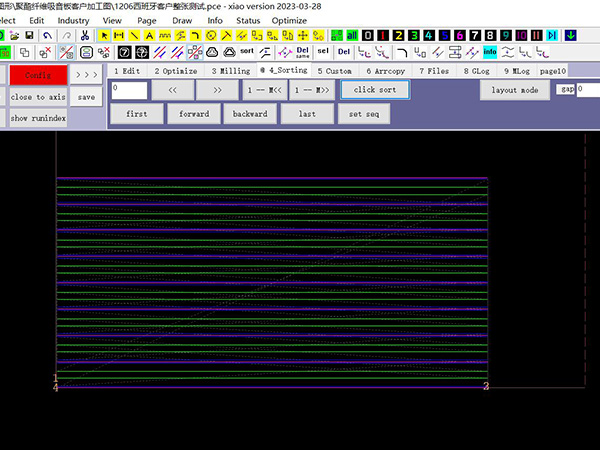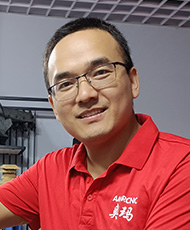01. Setting the SP Operation Number
First things first, let’s talk about setting the SP operation number (What is SP operation number) of the graphic according to the processing requirements. This step is crucial because it tells the machine what kind of task it’s going to perform, whether it’s cutting, grooving, or milling.
For example, if we need to cut a complex design, assigning an SP operation number to each part of the graphic can help streamline the process. This way, the machine knows which tool to call for each section. It’s like giving your cutting machine a map, ensuring it knows exactly where to go and what to do.

Imagine you are working on a graphic that requires cutting, grooving, and marking. So, how to make the machine switch freely between three different processes?
On the software, we select the graphic parts that need to be cut, grooved and marked, and then click on different SP operation numbers to assign corresponding tools to complete different processing. In this way, the machine will call the corresponding tools according to the SP operation number we set to achieve accurate and efficient processing.
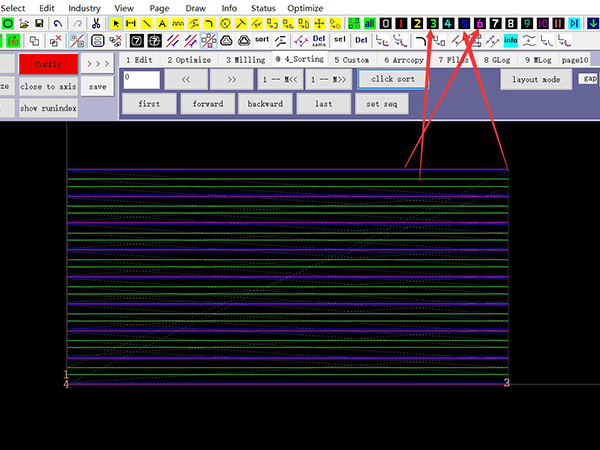
02. Setting the Processing Sequence
Next up is setting the processing sequence. You can manually set the cutting sequence, or use the one-click optimization feature. This is where things get interesting. The principle here is to cut and sort according to “inside first, then outside” or “small first, then large,” or simply by the SP operation number.
2.1 Manually set the cutting sequence
First you can click “View” on the software, and then select “Show sequence”. At this time, the sequential number of each of our graphics will be displayed on the graphics. This looks disorganized and will seriously affect processing efficiency, so next, we will try to change everything that is bad.
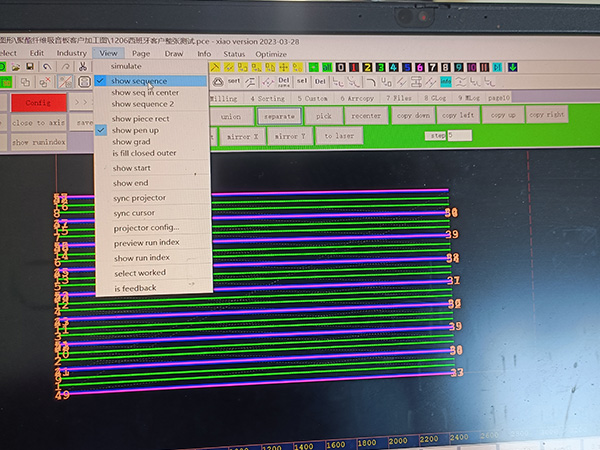
This may sound a bit complicated but don’t worry. You don’t need to set it up one by one. Smart working methods will make complex operations very simple and set the processing sequence more accurately.
When there are different SP operation numbers in your processing graphics, you can set them according to the SP operation numbers. You only need to click “Selected” and then select “Selected SP” to select the SP operation number of the corresponding graphics.
At this time, all the graphics with the operation number will be selected, and then we will combine them into a group (just click “Union” under the “Edit” option).

Next, we click “Sorting” and select different instructions – you can manually set its processing number, or you can move its processing sequence forward or backward:
“Frist” – arrange its processing sequence first;
“Foward” – move its processing sequence forward;
“Backward” – move its processing sequence backward;
“Last” – Set its processing order to the last bit;
“Set seq”——Manually enter the processing sequence of this graphic.

When your processing graphics have only one operation number, but different sizes. At this time, if you want to set the processing sequence from small to large. You only need to click on a graphic of a certain size first, and then select “Selected same dist” in the “Selected” menu, and all graphics of the same size will be selected. Next, you can edit their order.
2.2 Automatically set processing sequence
But, let’s be honest, sometimes we just want to hit that “optimize” button and let the software do its magic. One-click optimization ensures that the machine processes the graphics in the most efficient order, reducing unnecessary movements and saving time.
Before you perform automatic optimization of the processing sequence, you must first determine the principles for automatically optimizing the processing sequence.
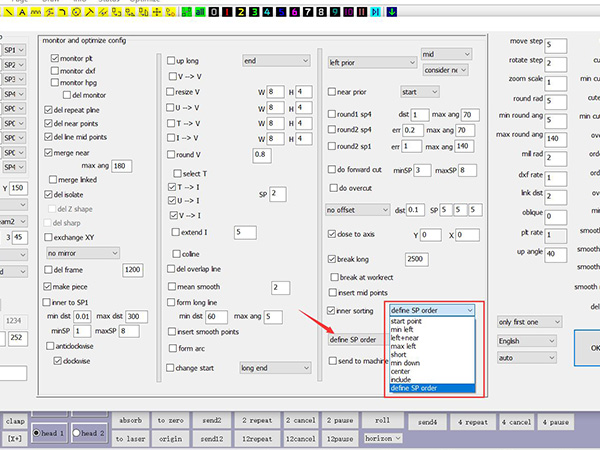
Click “Confing” to enter the optimization interface:
First, check “inner sorting” and set how to sort the inner graphics:
“start point”——Sort according to the principle that the cutting point is close to the origin (0, 0);
“min left” – Arrive at the smallest size according to the graphic size, and cut the left one first;
“left + near” – cut from left to right, and cut the shape closest to the lower point of the knife first;
“max left”——cut the largest graphic first, from left to right;
“short” – cut the smallest size graphic first;
“min down” – cut small-sized graphics first, in order from bottom to top;
“Center”—cut the graphics closest to the center of the sample first;
“Includ” – sequential cutting from the inside out;
“defin SP order”——Processing in the order of manually set SP operation numbers.
Next, we can set the overall cutting order of the graphics:
“piece order” – sort from inside to outside;
“SP order”——In order of SP operation numbers from small to large;
“piece order2” – in order from outside to inside;
“SP order INV” – in descending order of SP operation numbers;
“define SP order” – in the custom “SP” order;
“Line order (left) – Arrange from left to right.
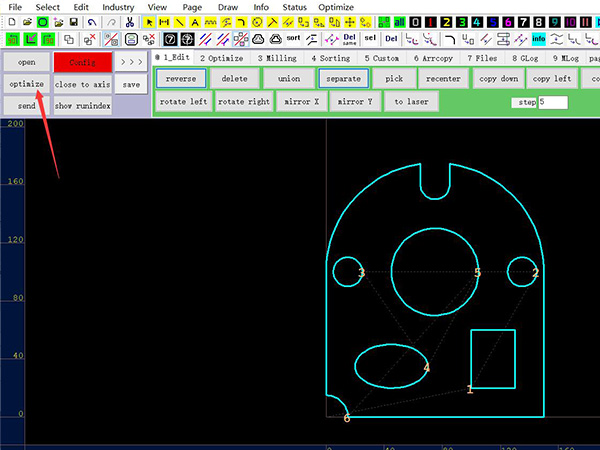
After setting the principle of processing sequence arrangement, we click the “Optimize” button to automatically optimize the processing sequence according to this principle.
03. Setting the Starting Point
Setting the starting point when cutting is another vital optimization. This step is about overcoming the cutting disadvantages of the blade and achieving the perfect combination of the starting point and the ending point.
Why is this important? Well, starting and stopping points can make or break the quality of your cut. If not set correctly, you might end up with jagged edges or incomplete cuts. By precisely setting the starting point, you ensure the blade enters and exits the material smoothly, producing a clean, professional cut.
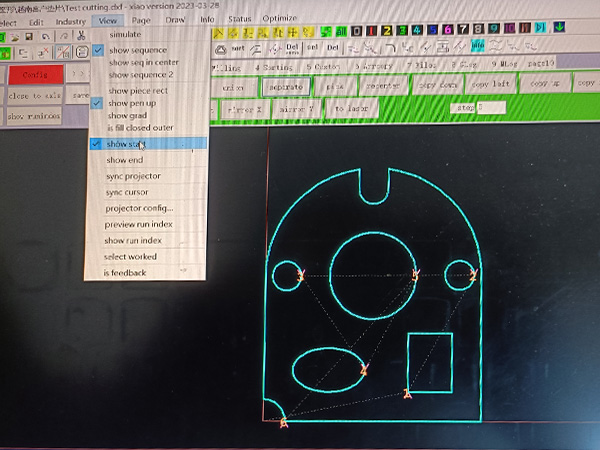
For instance, when cutting polyester fiber acoustic panels, the starting point setting ensures that the blade doesn’t snag or tear the fibers. This leads to a smoother cut and a better finish, which is essential for maintaining the acoustic properties of the panels.
So, how to set the starting point position of cutting?
Click “Optimize”, then click “Change Start”, and we can see a variety of starting position setting modes. If you don’t want to use the curve position as the starting point of cutting, then you can select “Line Mid” and all starting points will become in the middle of the straight line.
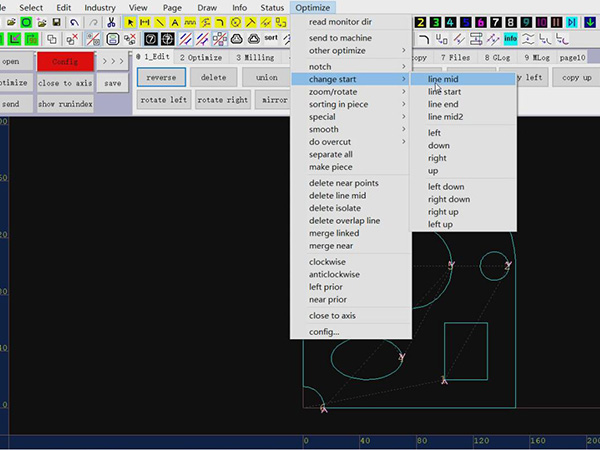
04. Setting the Processing Direction
Finally, let’s talk about setting the processing direction. This can be either clockwise or counterclockwise, and can be set manually or optimized automatically. The direction in which the blade cuts can affect the quality and efficiency of the cut.
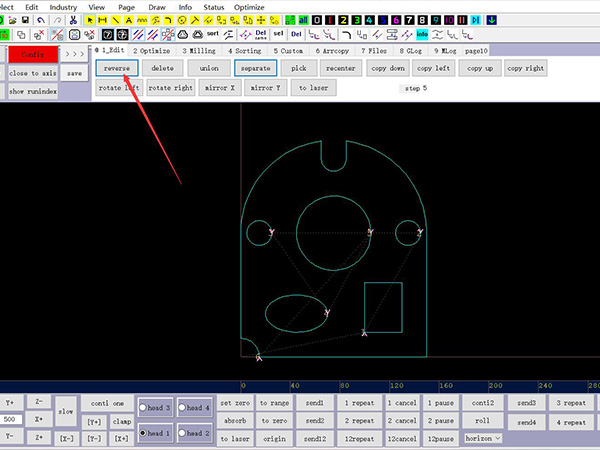
Setting the processing direction manually gives you the flexibility to control how the blade moves, which can be crucial for certain materials or designs. However, using automatic optimization can save time and ensure the direction is set for the best possible outcome.
Manually setting the machining direction gives you the flexibility to control how the blade moves, which is critical for certain materials or designs.
Click “View”, then click “Show Start” to view the starting position and direction of cutting. If we want to change the anticlockwise cutting graphics to clockwise cutting: click “Select”, and then click “select anticlockwise”, then all counterclockwise cutting graphics will be selected.
Then we click “Reverse” under “Edit” to complete the change of processing sequence.
Of course, using automatic optimization saves time and ensures you set the direction for the best results. You can click the “Confing” button and select “anticlockwise” or “clockwise” in the pop-up dialog box. Then click “Optimize” to automatically complete the optimization of the graphics processing direction.
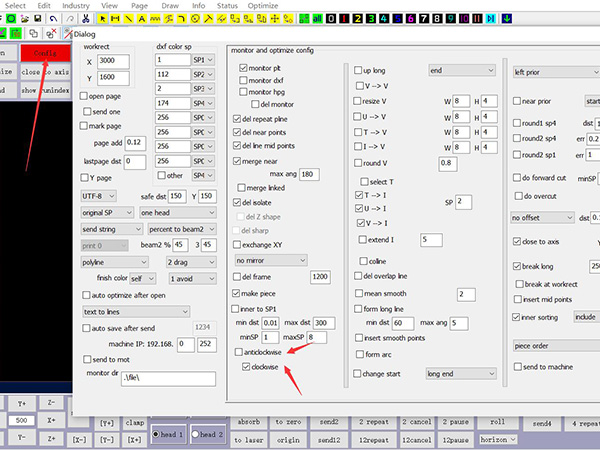
Conclusion
In summary, these four graphics optimizations are key to getting the best results from your oscillating knife cutting machine:
Setting the SP Operation Number: Tailor the tool usage to specific tasks for precision and efficiency.
Setting the Processing Sequence: Optimize the order of cuts to save time and reduce material waste.
Setting the Starting Point: Ensure smooth entry and exit points for clean, professional cuts.
Setting the Processing Direction: Adjust the cutting direction for the best quality and efficiency.
By incorporating these optimizations, you’ll not only improve the performance of your machine but also enhance the quality of your final products. At AMOR CNC, we’re all about helping our customers achieve the best results with the most advanced technology. Whether you’re cutting gaskets, acoustic panels, or custom leather goods, these tips will help you get the most out of your oscillating knife cutting machine.
Remember, the key to mastering your machine lies in understanding these optimizations and applying them effectively. Happy cutting!
For more detailed information, check out these resources and guides on our website.

